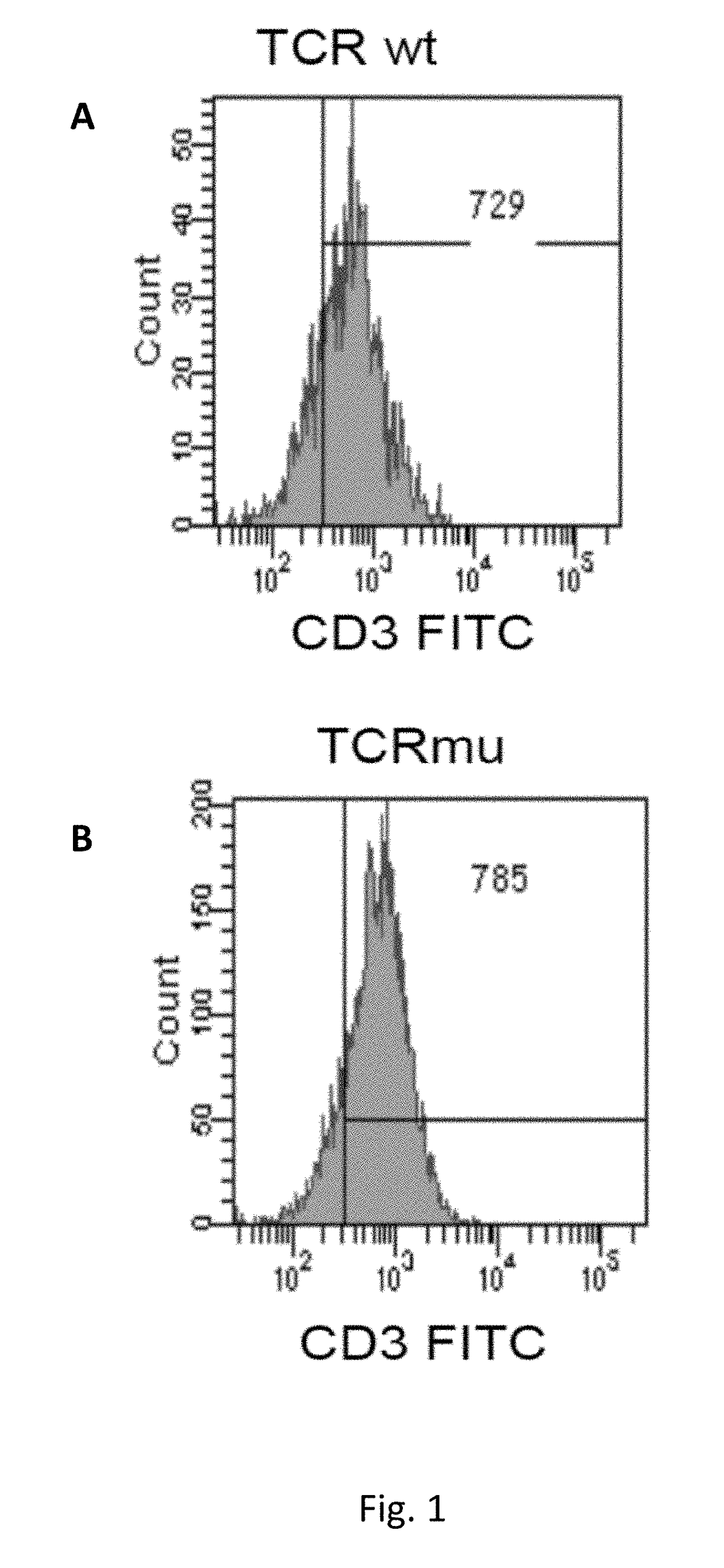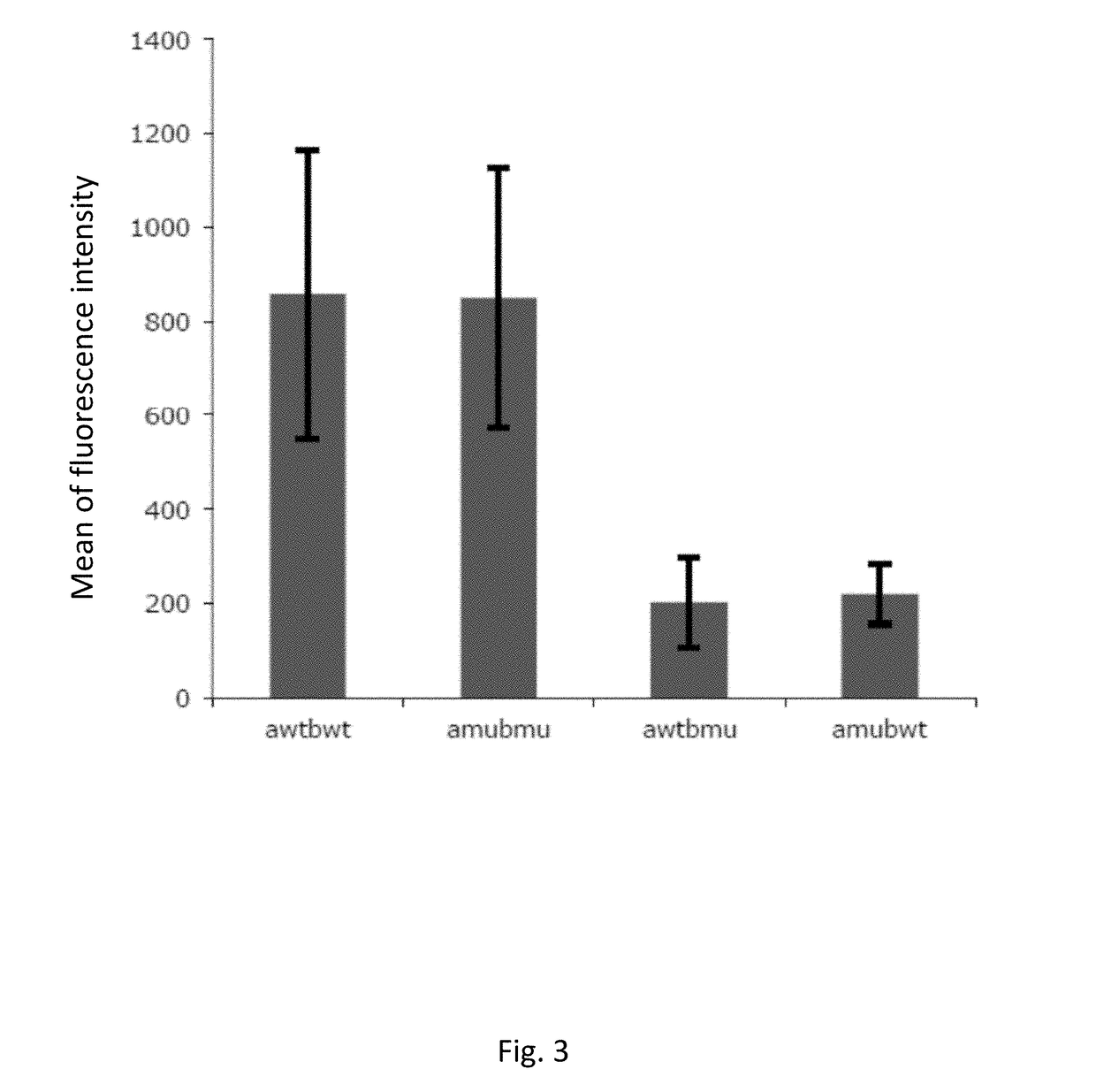T cell receptors
a technology of t cell receptors and receptors, applied in the field of modified t cell receptors, can solve the problems of reducing the efficacy, many problems remain to be solved, and hampered the clinical impact of this act approach, so as to reduce the risk of gvhd, reduce the risk of off-target recognition and elimination, and improve the pairing properties
- Summary
- Abstract
- Description
- Claims
- Application Information
AI Technical Summary
Benefits of technology
Problems solved by technology
Method used
Image
Examples
examples
[0199]Description of Wild Type and Mutant TCR Chains
[0200]Genetically modified TCRs whose transmembrane regions contain three or four substituted amino acid residues in the alpha chain and three in the beta chain were obtained as described in methods. Below, the mutated amino acid residues are highlighted in bold and shown in the amino acidic sequence context of mutated and wild type transmembrane regions of the TCR components (TM, Trans Membrane):
Mus musculus:VMGLRILLLKVAGFNLLMTLRLWwild type TM alpha (SEQ ID NO: 1)VMGLRILFLKVFGFSLLMTLRLWmutated TM alpha (SEQ ID NO: 2)TILYEILLGKATLYAVLVSTLVVwild type TM beta (SEQ ID NO: 3)TILYEILFGKAFLYSVLVSTLVVmutated TM beta (SEQ ID NO: 4)TILYEILLGKATLYAVLVSGLVLwild type TM beta (SEQ ID NO: 19)TILYEILFGKAFLYSVLVSGLVLmutated TM beta (SEQ ID NO: 20)Homo Sapiens:VIGFRILLLKVAGFNLLMTLRLwild type TM alpha (SEQ ID NO: 14)VIGFRILFLKVFGFSLLMTLRLmutated TM alpha (SEQ ID NO: 15)VMGFRILFLKVFGFSLLMTLRLmutated TM alpha (SEQ ID NO: 16)TILYEILLGKATLYAVLVSALVLwild...
PUM
| Property | Measurement | Unit |
|---|---|---|
| temperatures | aaaaa | aaaaa |
| final volume | aaaaa | aaaaa |
| volume | aaaaa | aaaaa |
Abstract
Description
Claims
Application Information
 Login to View More
Login to View More - R&D
- Intellectual Property
- Life Sciences
- Materials
- Tech Scout
- Unparalleled Data Quality
- Higher Quality Content
- 60% Fewer Hallucinations
Browse by: Latest US Patents, China's latest patents, Technical Efficacy Thesaurus, Application Domain, Technology Topic, Popular Technical Reports.
© 2025 PatSnap. All rights reserved.Legal|Privacy policy|Modern Slavery Act Transparency Statement|Sitemap|About US| Contact US: help@patsnap.com



